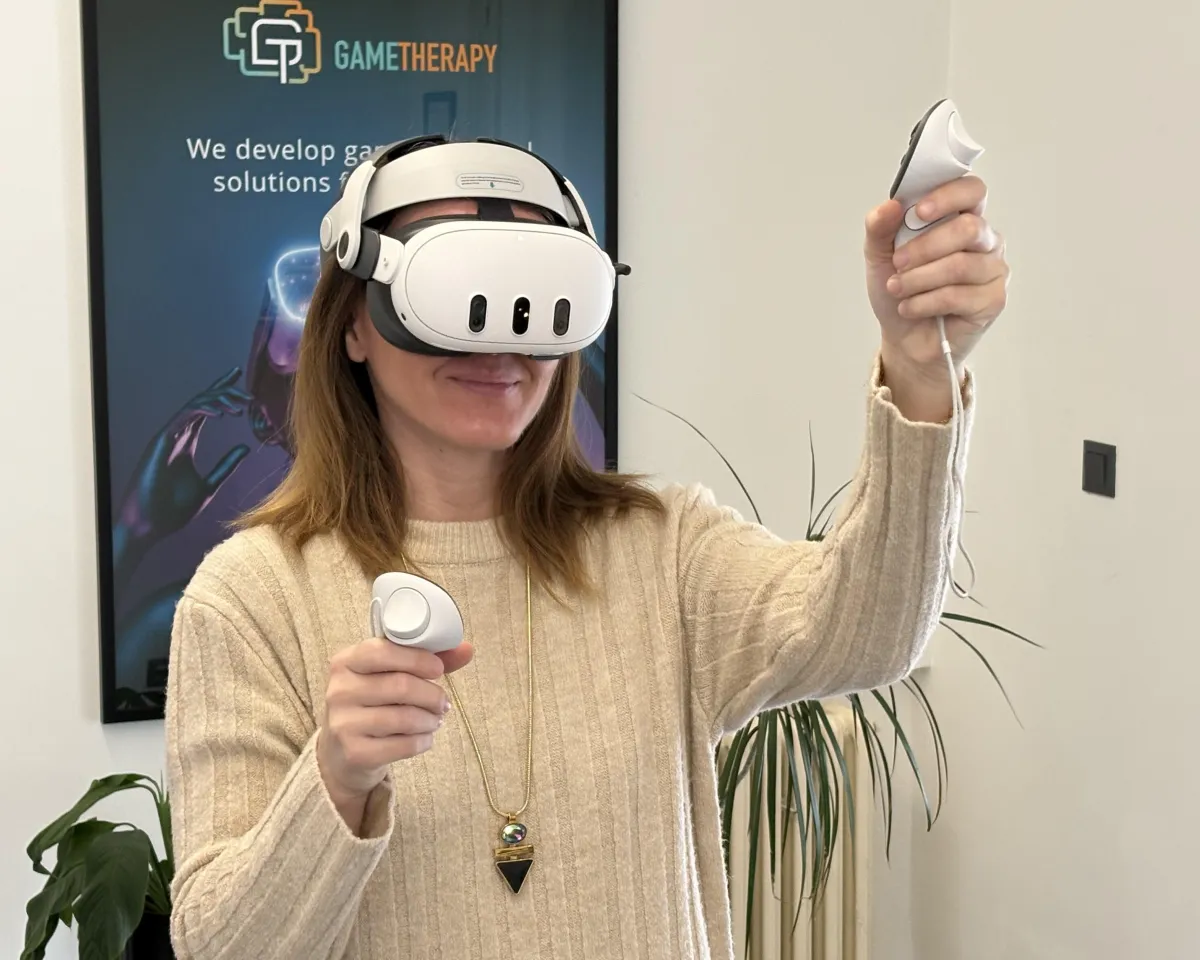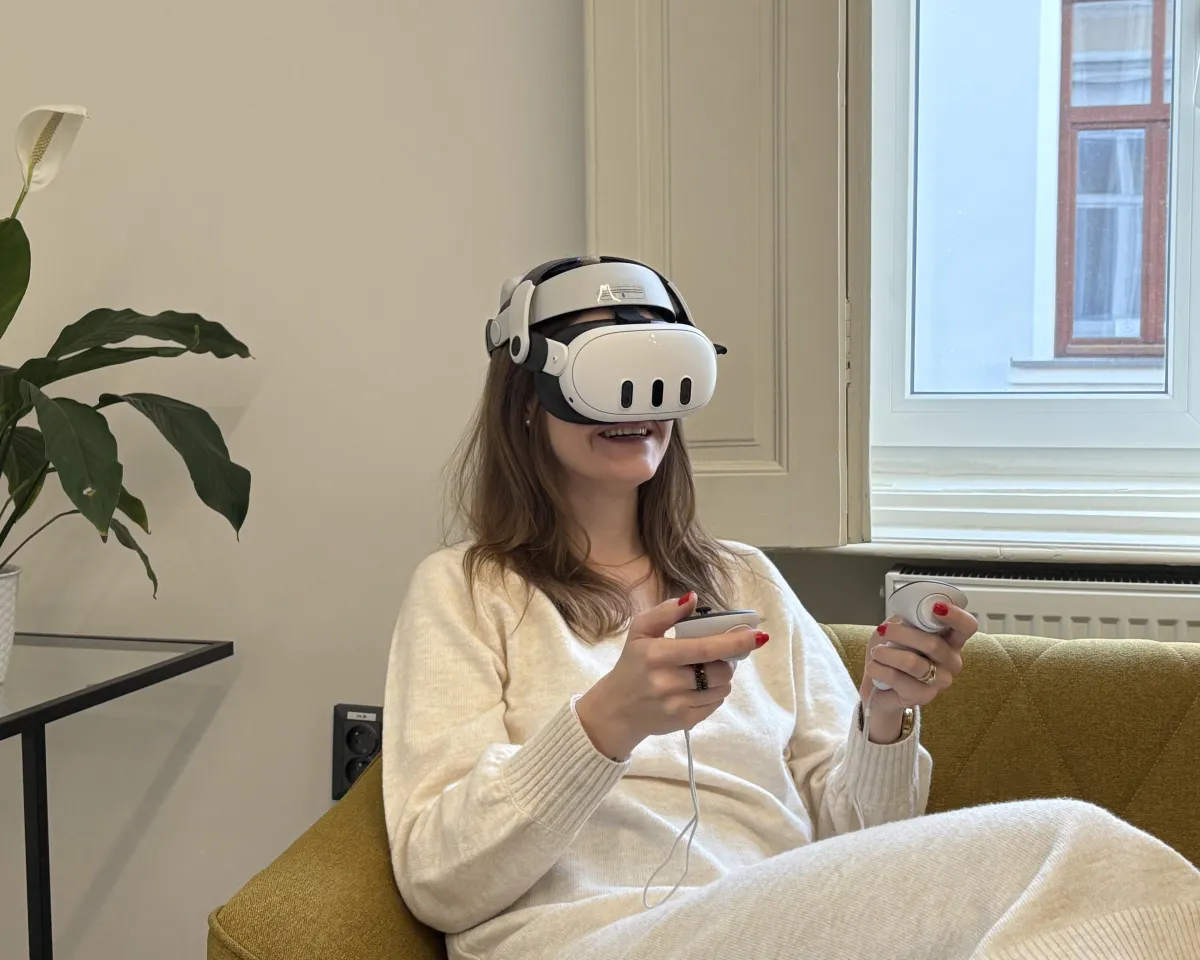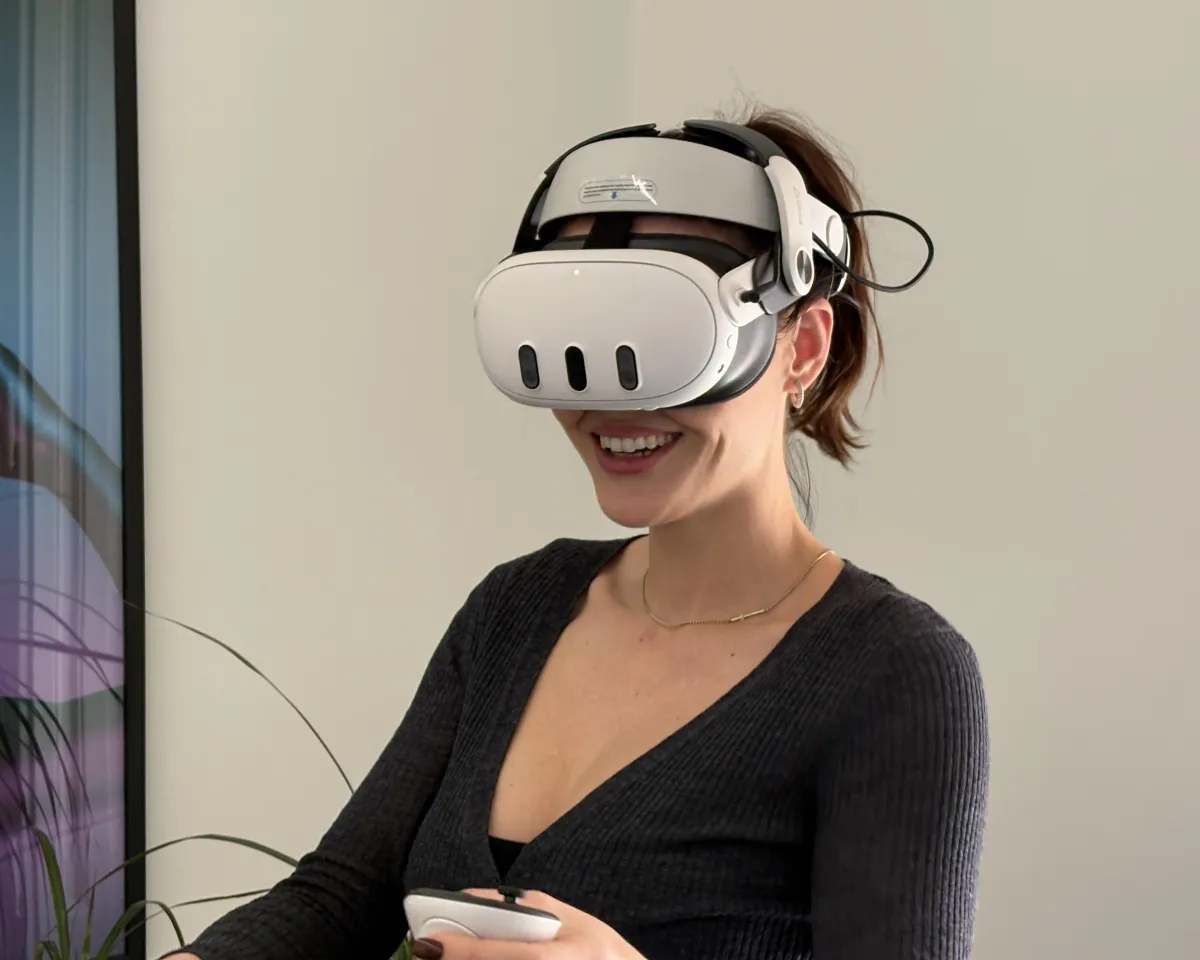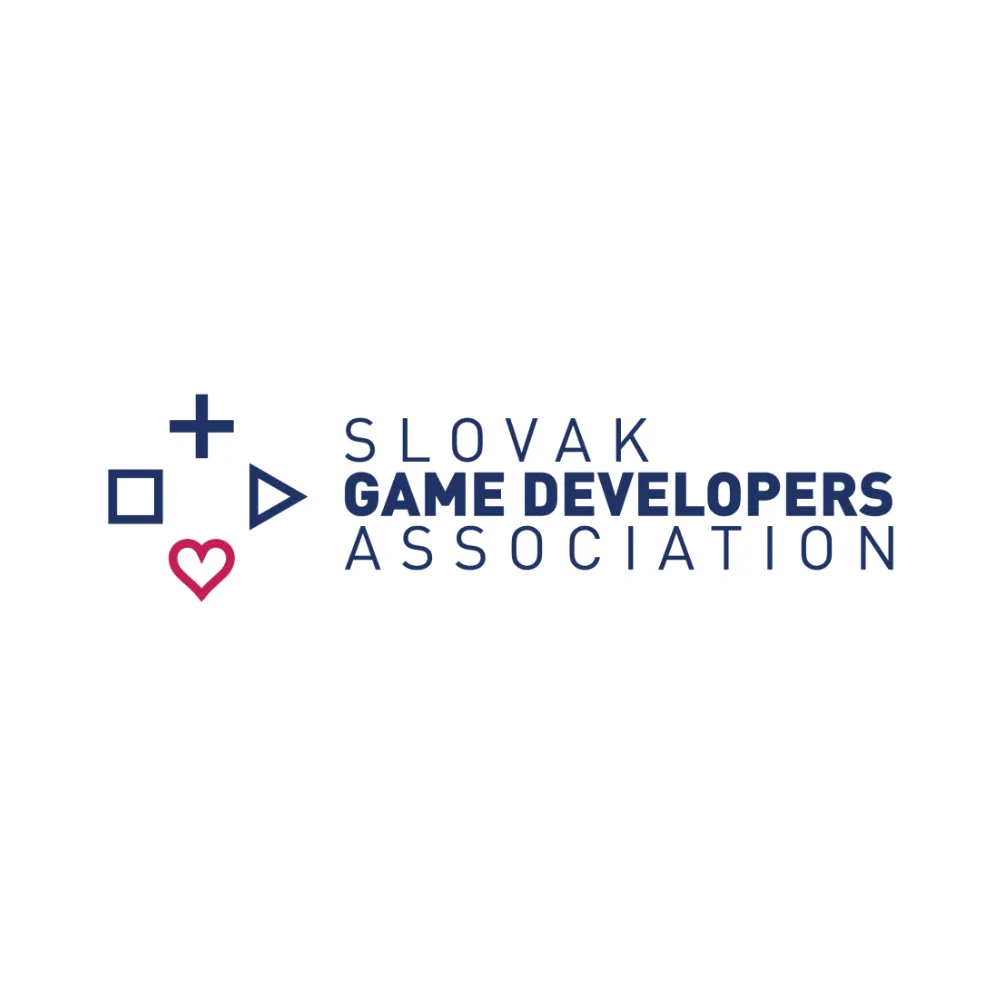BRIDGING RESEARCH, TECHNOLOGY, AND THE GAMING WORLD
Your partner in cutting-edge software development
Our mission is to transform human well-being and human-computer interaction. We do this by integrating virtual reality, augmented reality, and artificial intelligence technologies. At the heart of our philosophy is game-therapy. We create innovative, scientifically grounded, yet playful solutions for a wide range of challenges.

IMPACTFUL TOOLS FOR A BETTER QUALITY OF LIFE
Our products
ClaustrOFF
A game created with cutting-edge research to help you overcome fears in a safe, engaging, and effective way
NeuroBoostVR
Innovative exercises for seniors and others to improve motor skills, balance, and orientation with simple, effective activities
VIRADIA
Virtual Reality Platform for Early Diagnosis of Neurodegenerative Diseases, Revolutionizing Neurological Diagnostics
Experience the full power of VR for positive well-being
With a commitment to innovation and the transformative power of VR, we aim to make a lasting impact on mental health, education, industry, and personal growth, all grounded in scientific research and designed to enhance well-being worldwide.

GROWTH THROUGH INNOVATIONS
The GAMETHERAPY model
We harness the power of new technologies. By making care and training more accessible and tailored, we empower individuals and organizations to thrive. Rooted in scientific research, our innovative approach drives meaningful change, transforming mental health, education, healthcare, industry, and personal growth on a global scale.
SOLUTIONS THAT MAKE AN IMPACT
Immersive solutions for mental health and beyond
Our primary focus is on creating immersive applications that empower individuals to overcome challenges like anxiety, phobias, and neurological conditions. These solutions are designed to enhance well-being and unlock potential across various aspects of life, showcasing our expertise in innovative and impactful technologies.
Engaging VR/AR solutions for soft skills training
Evaluation in neurology and rehabilitation
General education
Personal development
Industrial training
Industry 5.0 applications

Join the Mind Heaven Community!
Be part of our journey to transform mental health care and well-being through innovation and gamification. By signing up, you’ll gain access to exclusive psychological content, enjoy discounts on our products, and stay updated with the latest news about our projects. You’ll also discover unique content like game stories and behind-the-scenes insights into our app development process. We value your ideas and feedback to make our games even better. Join us, become a co-creator, and help shape the future of the Mind Heaven Community!

Top 10 Breathing Exercises for Instant Anxiety Relief
Top 10 Breathing Exercises for Instant Anxiety Relief

"When you control your breathing, you can control your mind. Breathing is the simplest, yet most powerful tool to combat anxiety and find calm." – Dr. Martin Polák
Anxiety can strike at any time, leaving you feeling overwhelmed and out of control. The good news? You have a powerful tool at your disposal—your breath. Breathing exercises are proven to calm your mind, reduce stress, and improve your overall well-being. This article will guide you through the top 10 breathing exercises for instant anxiety relief, supported by science and designed to help you feel better fast.
Why Breathing Exercises Work
Breathing techniques target your body’s parasympathetic nervous system, helping to slow your heart rate, lower cortisol levels, and bring a sense of calm. Studies show that deep, controlled breathing not only alleviates anxiety but also enhances focus and emotional resilience. With practice, these techniques can become your go-to remedy for stressful situations.
1. Box Breathing (Square Breathing)
Box breathing is a simple yet effective technique used by Navy SEALs to stay calm under pressure.
How to do it: Inhale for 4 seconds, hold your breath for 4 seconds, exhale for 4 seconds, and hold again for 4 seconds. Repeat this cycle for 1-5 minutes.
Why it works: It balances oxygen and carbon dioxide levels in your blood, stabilizing your heart rate and reducing stress.
2. Diaphragmatic Breathing (Belly Breathing)
Belly breathing engages your diaphragm, encouraging deeper breaths.
How to do it: Place one hand on your chest and the other on your stomach. Breathe in deeply through your nose so your stomach rises. Exhale slowly through your mouth. Repeat for 5 minutes.
Why it works: It reduces shallow chest breathing, which is often linked to anxiety.
3. Alternate Nostril Breathing (Nadi Shodhana)
This yoga technique balances your mind and body.
How to do it: Close your right nostril with your thumb and inhale through your left nostril. Close your left nostril with your ring finger, release your thumb, and exhale through your right nostril. Alternate nostrils for 3-5 minutes.
Why it works: It calms the nervous system and clears mental fog.
4. 4-7-8 Breathing
Developed by Dr. Andrew Weil, this method promotes deep relaxation.
How to do it: Inhale through your nose for 4 seconds, hold your breath for 7 seconds, and exhale slowly through your mouth for 8 seconds. Repeat 4 times.
Why it works: It slows your heart rate and activates your relaxation response.
5. Resonance Breathing (Coherent Breathing)
Resonance breathing aligns your heart, lungs, and nervous system.
How to do it: Inhale for 5 seconds, then exhale for 5 seconds. Aim for 6 breaths per minute for 5 minutes.
Why it works: Studies suggest it optimizes blood flow and reduces anxiety symptoms.
6. Lion’s Breath (Simhasana)
This fun exercise releases tension and boosts energy.
How to do it: Inhale deeply through your nose. Open your mouth wide, stick out your tongue, and exhale forcefully while making a “ha” sound.
Why it works: It relieves physical tension often stored in your face and chest.
7. Pursed-Lip Breathing
Often used for anxiety and respiratory issues, this method promotes slow, deliberate breathing.
How to do it: Inhale deeply through your nose, then exhale slowly through pursed lips as if you’re blowing out a candle.
Why it works: It helps regulate your breathing rhythm and prevents hyperventilation.
8. Visualization Breathing
Combine breathing with mental imagery for extra relaxation.
How to do it: As you inhale, imagine calm energy entering your body. As you exhale, visualize tension leaving your body.
Why it works: It combines the power of mindfulness with controlled breathing.
9. Equal Breathing (Sama Vritti)
A simple exercise to restore balance and focus.
How to do it: Inhale through your nose for 4 seconds and exhale for 4 seconds. Keep the lengths equal.
Why it works: It promotes mental clarity and calms an overactive mind.
10. Humming Bee Breath (Bhramari)
This technique is known for its soothing vibrations.
How to do it: Inhale deeply through your nose. As you exhale, make a low humming sound. Cover your ears with your fingers to amplify the sensation.
Why it works: The vibrations calm your mind and reduce stress hormones.
Tips for Success
Practice these exercises in a quiet space where you feel comfortable.
Start with 2-3 minutes per session and gradually increase the duration.
Combine breathing with mindfulness or yoga for even greater benefits.
Scientific Evidence Behind Breathing Exercises
Journal of Psychiatric Research (2023): Found that diaphragmatic breathing significantly reduced cortisol levels and improved mood in individuals with anxiety disorders.
Frontiers in Psychology (2022): Showed that resonance breathing enhances heart rate variability, a marker of reduced stress.
Clinical Psychology Review (2021): Highlighted the long-term benefits of 4-7-8 breathing for managing chronic stress and anxiety.
Final Thoughts
Anxiety can feel overwhelming, but it doesn’t have to control your life. These simple breathing exercises offer an immediate way to regain calm and control. Try incorporating one or two techniques into your daily routine to start experiencing the benefits. Remember, the power to calm your mind starts with your breath.
References
Lehrer, P. M., & Gevirtz, R. (2021). Heart rate variability biofeedback: How and why does it work? Frontiers in Psychology.
Brown, R. P., & Gerbarg, P. L. (2018). Sudarshan Kriya yogic breathing in the treatment of stress, anxiety, and depression: Part II—clinical applications and guidelines. Journal of Alternative and Complementary Medicine.
Jerath, R., Crawford, M. W., Barnes, V. A., & Harden, K. (2022). Self-regulation of breathing as a primary treatment for anxiety. Journal of Psychiatric Research.






